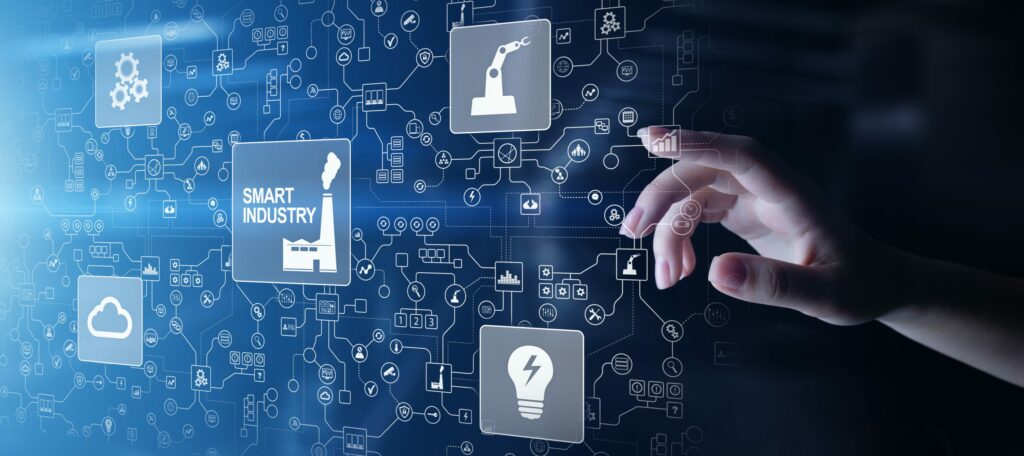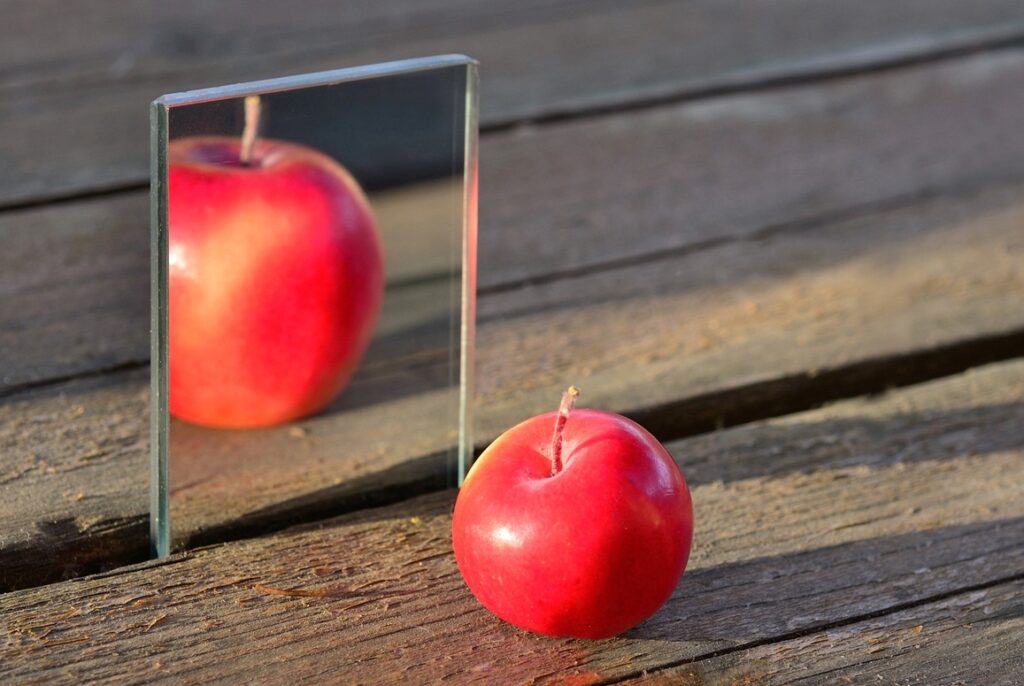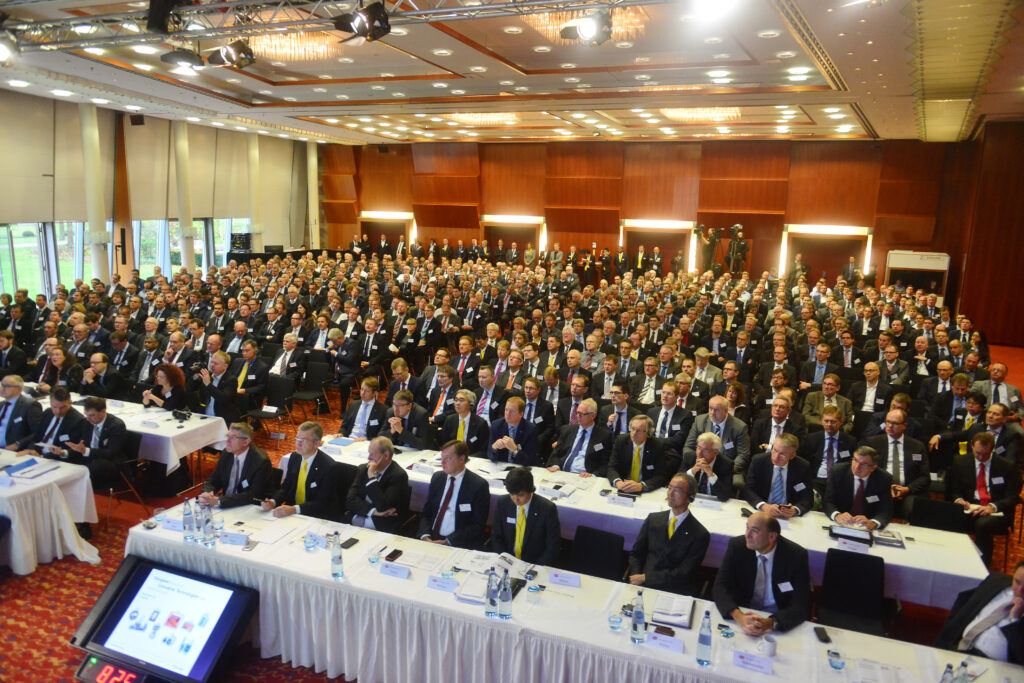By the way, does this have anything to do with Industry 4.0?
Yes, it does. This is suggested by terms such as “digital transformation”, “digitisation of industry”, etc., which are mentioned in connection with Industry 4.0. But to point one thing out to start with: No, digitisation alone does not equal Industry 4.0. Industry 4.0 goes beyond digitisation (and optimisation). Even if I digitise everything I am currently doing in my company, I may no longer be using paper… However, I have not achieved much more than to create a certain foundation for Industry 4.0. This is similar to receiving new options through a tool (digitisation), but then not making use of these by applying new methods.
A simple example for this would be operating instructions. For example, if they are available as a Word document, I can claim to have digitised them. But nothing more. Their basic use does not differ from the previous one. But if I start to make operating instructions available digitally, live and up-to-date, and actively share and synchronise the active part with production planning and maintenance, it is conceivable that all three departments will work more efficiently or that new operators working with the “digitally experienced colleague” will grow accustomed to their tasks more quickly.
Based on wide-ranging networking and synchronisation of information
The example is at a very low level and only in a limited “space”. However, the idea of Industry 4.0 is based on wide-ranging networking and synchronisation of information that not only affects your own operation. If I then use these tools by applying new methods – such as the intelligent toilet paper holder linked with Amazon (for automated ordering) – then I can claim to be in the ballpark of Industry 4.0.
Simply put: digitisation does not result in a new business model. But I can probably only implement a new business model by means of digitisation. In general, it can be said that with every optimisation measure that applies the concept of digitisation, I continue to prepare my business for Industry 4.0 or am better able to implement Industry 4.0. In the following, I would like us to look at Industry 4.0 from two perspectives and also see where “optimisation” has its place in this context.
Perspective #1: The “goal”
One thing beforehand: “Digitisation” means more than just converting a piece of paper into a Word document. It affects “everything”: from that piece of paper to entire work processes. But the question is, what opportunities does digitisation offer me, what can I do that is new and/or what can I do differently? I need a goal, I need an idea!
But please be careful. It is quite easy here to get the idea that you are dealing with the “chicken or the egg dilemma” here. Do I digitise first and then see what opportunities open up for me? Or do I first develop an idea and digitise accordingly? In contrast to the “chicken or the egg dilemma” there is nothing to be said against starting from both angles. Three things are needed to do this in a promising manner:
1. Creativity
Think outside the box – the impossible becomes possible – and why not? Imagine that money doesn’t matter and almost anything is possible from a technical standpoint. What kind of business models, changes in production or workflow, etc., can you imagine? What kind of collaboration between departments, suppliers and customers can you imagine? This is very important in order not to end up with old wine in new bottles and to wonder why Industry 4.0 (digitisation) seems to be of no use. The latter is unlikely, since digitisation itself will most likely bring about more efficiency. But without creativity, this potential will not be exploited.
2. Discipline
Now it is necessary to get down to earth again. So: What is actually doable and has good prospects of success? Here it is important to carry out an assessment and prioritise accordingly. To do this, a structure must be created in which projects can be implemented gradually and step by step. This requires discipline and leadership. There is nothing wrong with starting with (small) projects in three different places, for example. The only important thing is to implement them in a manner embedded in an overall structure, so that you don’t end up with a patchwork of solutions that overlap, do not communicate with each other, etc.
There is one thing that cannot be stressed enough in this regard: Think of everything as far as possible, but do not do everything at once! This is also the right place to consider IT security. We work with a lot of data and information across departments and even across the boundaries of individual companies. One cannot emphasise discipline and structure enough when it comes to implementing and guaranteeing IT security.
3. Perseverance
There is no software download and no “copy/paste”. You are an individual company and will also have your own individual goals. You have formulated your goals with creativity and prioritised them with discipline. Subsequently, a plan is then drawn up according to which the goal can be achieved step by step. What is important now? To keep it up! You will most likely not be able to do everything that you may need to achieve your goal at once. It is also important to take human factors into account.
Not everything that has been implemented “sensibly” from a technical standpoint is also used immediately or possibly at all. Boundaries between departments or even companies have to be overcome as well. And, as before, changes in the environment will arise over time that may necessitate a change to my plans. It is important to persistently pursue the goal and to not overlook any problems or changes. Pursuing a plan does not mean to be inflexible.
Summary
Creativity, discipline and perseverance are “partners” of equal value and importance when it comes to achieving my goal. The more specifically I define this goal (or the individual intermediate goals), the easier it will be for me to find and implement appropriate solutions. What is important is a holistic plan and a structured, gradual implementation of said plan. And again, it cannot be stressed enough: Think of everything as far as possible, but do not do everything at once!
In addition to a “goal”, I need a foundation, a “raw material” that helps me to achieve my goal. Let’s talk about Industry 4.0. Here I obviously require data, possibly even a lot of data. Data is basically the necessary “raw material” that I require to achieve my goal. But just as I cannot run a car with crude oil fresh from an oil well, “raw” data straight from the source is of limited use. Crude oil has to be transported and refined before I can use it. So what do I have to do to make use of my data?
Perspective #2: The “raw material”
There exists a general consensus that data is the “raw material” for Industry 4.0 or the digitised industry. It is therefore not surprising that data is always a topic of discussion when talking to customers. As much as everyone agrees on how important data is, the idea of how that data is handled is often inaccurate. So let’s put it in simple terms: When handling data, it is important to consider three things.
1. Collection of data
Everyone immediately thinks of the field level. But this is just a source of data – albeit a big one. However, in order to retrieve information from acquired data – and that is what you actually want – you have to open up additional data sources and link these together. These might be current energy prices or raw material prices, for example. Here, production planning links your data with maintenance planning. Or I digitise work processes, for example my permit to work and then automatically make this information available to all areas involved.
The usage of and linking with data sources will surely also increasingly take place from outside the boundaries of my factory. Regardless of where I collect which data, it is always important to consider which data with which accuracy is actually required to achieve my goal. A typical example from the field level is the decision whether laboratory data is sufficient, given the delay in time suffered. To use a soft sensor or an on-line analysis device… This can only be answered under consideration of the goal at hand.
2. Transferring and saving data
After we have found our “raw material”, we have to “transport” it. We are then faced with two challenges: the format and the path of transmission. Data still exists in many different formats. The same applies to the options for transferring data. Here, the distinction between “wired” and “wireless” is the easiest. The different data formats can be harmonised by suitable “conversions” and the different paths of transmission may also turn out to be a blessing. For example, if I have a data source from which I require very little data and not very often, LoRaWAN can be the right choice. The long-range capability combined with low energy consumption also means that a) I need only few gateways to cover large rooms and that b) sensors will last a long time even with battery operation.
After the “transport” is done, the data must be saved. Various options and philosophies exist concerning this topic, centralised or decentralised storage, local or cloud storage. I can decide whether to do all of this myself or to leave it to a service provider and so forth. It should be possible to find the right solution for everyone here.
It is much more important, and this applies to both transmission and storage, to think about the following aspects: IT security and the concept of a “single truth”. The former must be a matter of course and the latter, regardless of which concept I choose, must be a given. All participants must receive the same information regardless of the source. Discipline and a structured approach are also very helpful in this regard.
3. Evaluation of data
What now? My “raw material” has been extracted and stored. The ultimate discipline yet remains. What is meant here is the refining process, that is, to make information out of data that is suitable for making valid decisions.
A simple example will show why this is so important. A measured value is shown to me as “100”. That may be true, but I cannot derive an immediate use from this. If this measured value is supplemented with additional context, for example, “Temperature of sump heating of column C1 is 100°C”, I can at least categorise this value of “100” as far as units and location are concerned. But taken by itself: this still offers no valuable use to me.
Incidentally, this is also a fine example of “Knowledge does not automatically derive a benefit”. We now skip several possible levels and come to the following situation: From various data, my real-time optimisation has suggested an optimal setpoint of 110°C for the sump heating of the column. Further information that I receive is, for example… that I can use this to increase my throughput by 2%, my profit, based on current prices, will increase by 1%, etc. Based on this information, a decision regarding the “sump temperature” can now be made.
Ultimately, it is about evaluating and processing this vast amount of data so that a person can make decisions based on it. Under certain circumstances, “intermediate” decisions are already made during the evaluation, or it may be that in the end, not only an informative cue is presented, but a recommendation for action. Maybe not everything is possible yet, but a lot certainly is.
Summary
Collecting, transferring and saving as well as evaluating are essential when it comes to digitisation and therefore Industry 4.0. Given the many options, it is yet again crucial to proceed in a structured manner and to take the following into account: Think of everything as far as possible, but do not do everything at once!
I would like to end this section with a short comment on the term “platform”. As we have seen above, data comes in many formats. There are many ways to transfer data and ways to save it. Handling these formats and possibilities is the basic task of a “platform”. This software enables me to simply manage data as data, regardless of format and transmission method. This means: My “platform” knows as many different formats and paths of transmission as possible.
“Platforms” often have two other functions. On the one hand the possibility of a graphical presentation. For example, trends, KPIs, etc. And secondly, functions used for evaluating data. In the simplest case, simple statistical evaluations or similar. However, a “platform” should be open to transfer these functions to other software as well.
And now?
With this last part, I intended to stress certain things in regard to optimisation, digitisation and Industry 4.0.
- Every optimisation project has its value – and not just taken in isolation, but as part of the path to Industry 4.0.
- Be creative, show discipline and keep it up. If you stick to that, Industry 4.0 will be a breeze. And of course, do not forget to do your homework (collecting data, etc.).
- What functional safety is to the real world, is paralleled by IT security – and both are essential.
Now it is up to you to act and “Think of everything as far as possible, but do not do everything at once!”




